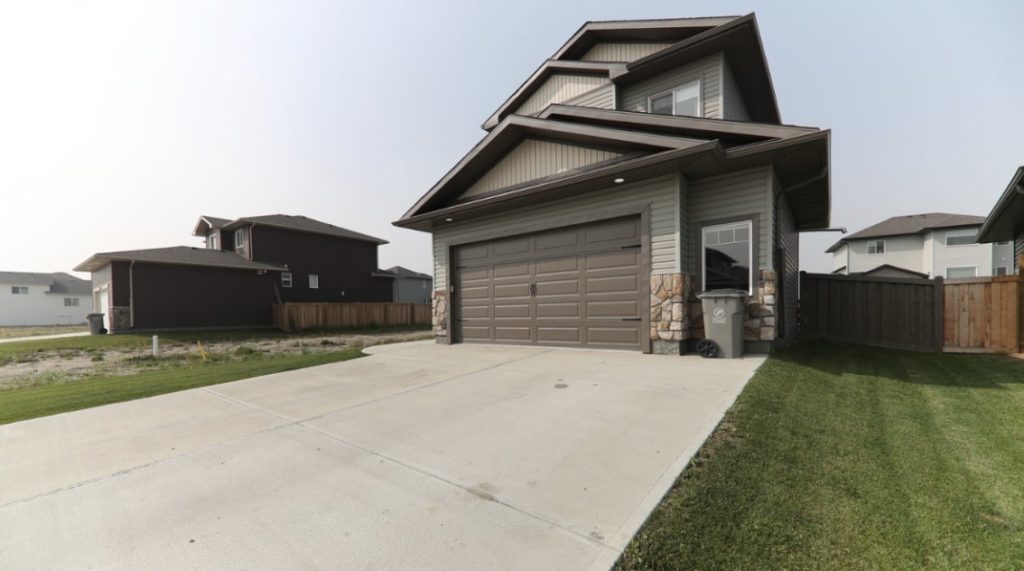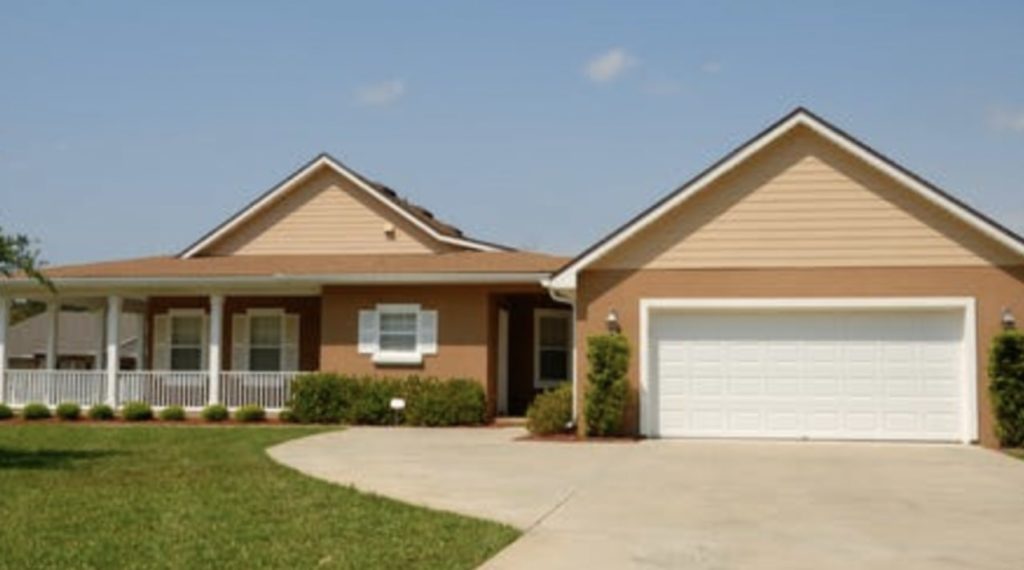There are several effective ways to deal with a steep driveway. Most of which, luckily, doesn’t require replacing the entire surface:
- Apply sand and gravel or resin.
- Add a couple of speed bumps for safety.
- Build safety barriers on the sides to protect against sudden slips.
- Fully regrade the driveway.
Now, let’s discuss these steep driveway solutions in more detail so that you’ll know whether these are apt for your home’s driveway.
How steep can a driveway be?

For the utmost safety when driving or parking, the recommended slope grade for a house driveway is 12 percent.
Note that the max driveway grade one can build legally is 15 percent, giving you a 3 percent allowance. However, there are exceptions to this.
If you live on naturally hilly terrain, your driveway can have a 25 percent incline at most. That’s 25 feet of incline across 100 feet.
These limitations are important to avoid dangers that can result from an excessively steep driveway. Common examples include sudden sliding, bumper scrapes at the foot of the slope, and third-party vehicular damage.
5 Effective Solutions for a Steep Driveway

Below are the things you can do if you have a steep driveway:
1) Add gravel or sand to the driveway
Many car accidents are caused by steep driveways. The driver may not totally see what’s going on in front of the car, or the parked car can slide down when the gear isn’t set at neutral.
Using gravel or sand is the simplest and most budget-friendly solution for a steep driveway. It improves extra traction to the car’s tires for added safety.
Besides that, these rocks can be used to fill uneven and sunken surfaces, including holes and dips, thereby helping to somewhat improve the driveway’s aesthetics.
However, using sand, gravel, or both won’t improve the visibility of the driver. Furthermore, over time, gravel can erode and go to the base of the driveway, so having it maintained regularly is crucial.
2) Use resin on your driveway
As an alternative to gravel or sand, you can also use resin if your concrete driveway is very steep. Resin improves traction slightly better than gravel, making it safer during rainy or wintry days.
Having said that, incorporating resin onto your driveway will take double the work. That’s since compacted gravel and sand will have to be used before the resin is placed on top of the driveway.
Also, beforehand, erosion and drainage issues have to be addressed by a professional. If this is not done, the driveway will have a poor design that will lead to costly and stressful repairs in the future.
3) Build speed bumps on the way
Speed bumps are another cost-effective solution for a steep driveway.
You can buy rubber ones online for $100 to $500. And you can install them yourself without relying on a qualified professional.
While they’re not pleasant to drive over, speed bumps can prevent cars from speeding or slipping down your property.
4) Create safety barriers on the driveway sides
Just another additional safety feature of a driveway, safety barriers keep your cars from skidding off the slope and prevent property damage.
This is particularly helpful if there’s rain or ice on the sides. In addition, using an ice melt can keep the driveway dry and safe.
5) Fully regrade the driveway
If your driveway is so badly designed and steep that it risks everyone’s safety, you’re left with no choice but to regrade it fully.
As expected, this job is a very expensive undertaking. On average, you can expect to spend $7 to $10 per square foot or $3,000 to $5,000 to repave a 500-square-feet driveway.
The process will involve removing your existing driveway, pouring in filler soil, and repaving it completely.
The advantages to this solution are 1) your driveway will be completely redesigned to complement your house style, 2) it will be smooth and less steep, and 3) the driver’s visibility will improve.
FAQs about Steep Driveways

- What is the best material for a steep driveway?
Overall, recycled plastic pavers are the best material to use for a steep driveway. The reasons are they are durable, ice and rain-resistant, water-permeable, and of course, sustainable.
Concrete and brick pavement are also good, though they aren’t as hardy and slip-resistant as plastic ones during rainy and wintry days.
But for a quick and budget-friendly solution, gravel and sand are the best materials. And they also have excellent vehicle slip resistance.
- Is asphalt or concrete better for steep drive paths?
Asphalt is indeed better than concrete when it comes to steep drive paths. First, it’s tailor-made for wet and slippery surfaces and inherently contracts or expands during extreme cold or warm temperatures.
Concrete cracks under heavy weight or harsh temperatures and doesn’t perform well to prevent cars and trucks from skidding on the slope.
- How do you park a car on a steep driveway?
In this situation, you can put your car on neutral gear, which acts like a brake. In addition, you can turn the wheels to the side so that they won’t roll off on their own suddenly.
- How do you manage a steep driveway in winter?
In winter, ice melts are a fantastic product to use in order to prevent a steep driveway from becoming more slippery due to snow or ice. Some work almost quickly, and some can dissolve a lot of snow and icicles.
Aside from that, you can
- use gravel or resin on the road for tire traction,
- pour concrete to fill in cracks, dips, and sunken sections,
- and manually shovel the snow or use a snow blower.
More Builders Lists
Here are some helpful lists of contractors to remedy or repave your steep driveway:




